Good Habits Build Great Horses
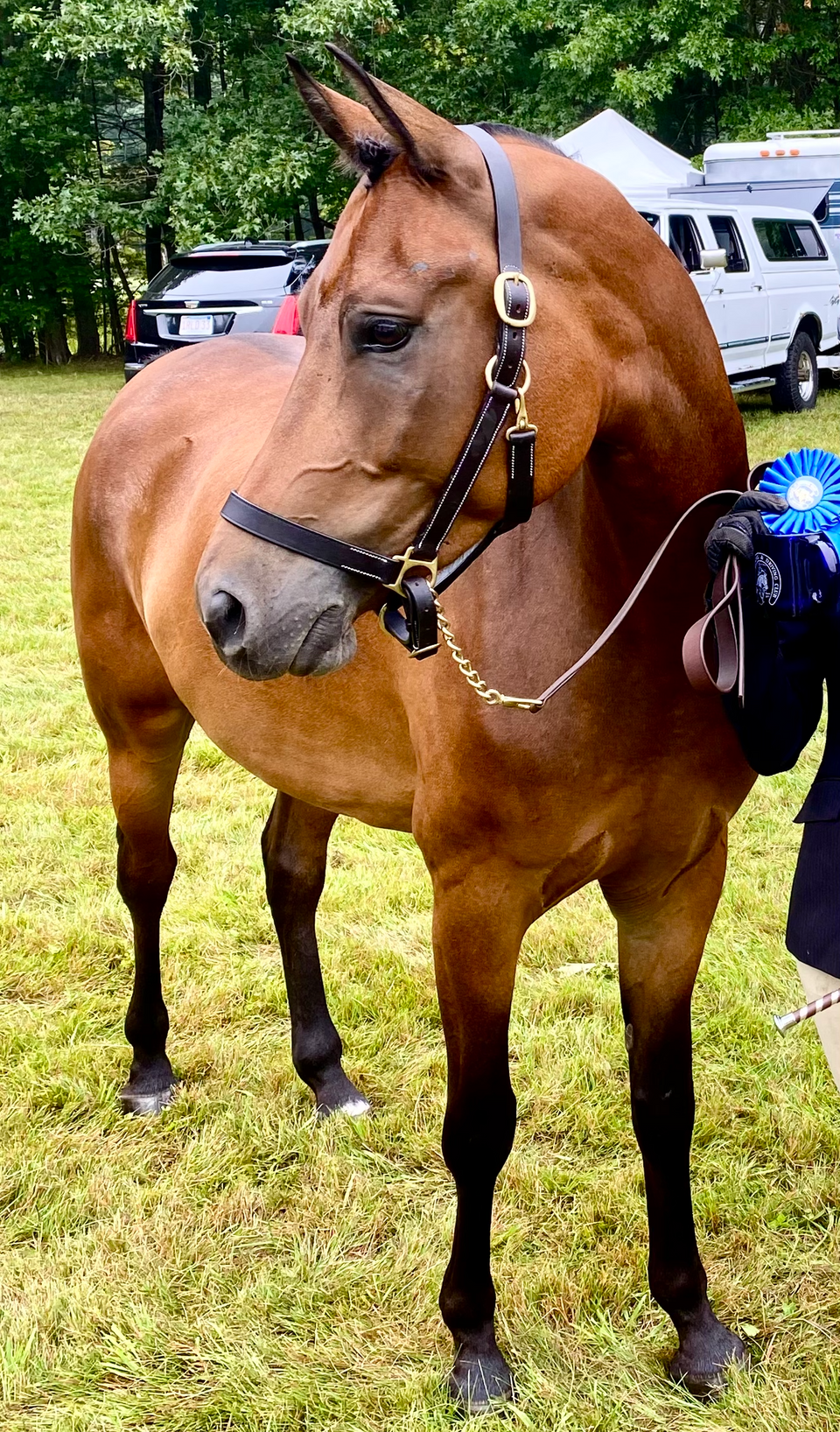
Initially, I wanted to title this post, 'Good People Build Great Horses' because I am bursting to write about the impact of numerous people who have helped us to date, but I also wanted to discuss some new aspects of training and relationship in the context of this horse's journey. Having said that, the effects of the many wonderful individuals in our lives can't be overstated, and I will share a tribute to them in an upcoming post once I have their consent to discuss them here. This will be a long post, so fair warning in case you don't feel like reading a wicked huge tome.
As planned, we competed in the English in-hand class at the RRDC show on the 10th of September, where our boy added another blue ribbon to match the one he earned at his first show. To be clear, we were the only entry in the class this time, so we won by default, but we gave our best effort regardless and performed as though we were in a full class. This was another valuable opportunity for Levi to gain positive experience showing and for us to practice solid habits we have worked to establish, during what can be a very stressful situation for horses. What was interesting about this experience compared with the first show in May was his quality of his energy alone in the ring vs. against other horses. Despite his laid-back attitude in general, this horse has a competitive streak that emerges occasionally in the company of other horses. At this second show, in the absence of worthy foes, he didn't have the same competitive spark although he still turned in an A for effort. The judge loved Levi and melted over him; he consistently encourages affection from everyone he meets. After the class we thanked the judges and volunteers, loaded up to give our space to another truck and trailer, and went right home. To me, good sportsmanship (in addition to showing good horsemanship) is having situational awareness, being on time for the class, understanding rules and regulations, respecting judges and volunteers, being mindful of the emotional and physical thresholds for everyone on your crew, and always putting the horse's needs first. Taking up space when not performing, being careless and distracted, not expressing appreciation for volunteers' efforts, not being organized and mindful of others or choosing to socialize rather than be present for the horse are habits we avoid. The plan for Levi during this show was the same as the last, and we had the opportunity to demonstrate the good habits we have worked on regarding trailering and good behavior during the show. We achieved everything we set out to do, particularly in regard to Levi's ability to relax, regulate, and focus amidst the novelty and noise of the show environment, and I am satisfied with our effort over all.
My plan for the rest of September was to continue our training under cart and also take Levi to another local show at the end of the month. However, two weeks ago, I noticed sudden swelling in his left knee and left fetlock, accompanied by two small wounds on the outside of both joints. There was no sign of lameness on either leg, thankfully, which would indicate a bigger problem, but even a small injury near a joint is of high concern due to the potential for infection and the vulnerability of these areas. I cleaned and treated the wounds and cold-hosed the knee and fetlock which brought down the swelling considerably. Were these injuries due to a kick or a fall on pasture? Levi is turned out with another horse and often a third horse, so being kicked was a strong possibility. We are extremely lucky to work with an excellent veterinary team who have been with us from the beginning. Our vet saw him right away and determined that both were puncture wounds, and not the result of a kick (I did apologize to Ollie for even thinking of this accusation!). The fencing in his particular paddock consists of smooth cylindrical metal posts with wire attached on the outside, and there are no sticks or sharp objects or other potential hazards in the pasture, or in his stall, so it is a mystery how he might have injured himself. The punctures were both relatively small and shallow. The vet thoroughly cleaned and flushed the wounds, and gave me instructions on how to treat them. She prescribed antibiotics and pain medication to mitigate infection and swelling and help Levi be more comfortable. I decided to give him a break from training and showing and keep him on turnout only for exercise, until the treatment cycle ended.
I am really grateful that, to date, this is the only serious health crisis we've had to deal with so far, considering what a busy monkey he is and how often he has tried his best to replace every hair on my head with grays. He has always been very healthy and this was the first vet visit outside of his routine care and vaccinations. Outside of swaddling him in bubble wrap and reminding him every day that he only gets four legs in his lifetime and we can't replace them so he needs to be careful, I can only avoid exposing him to potential hazards and take precautions with his training and environment, which I am in the habit of doing anyway. In addition to this, building (and keeping!) good relationships with his medical care team through taking their advice and doing my best to follow their instruction and suggestion is so important. No one wants a good vet or farrier to fire them as a client because the professionals think they're not listening! The next issue I need to address, and am in the process of working on, is Levi's weight. Unfortunately, he is a Morgan motivated primarily by food, both of his parents are very stocky types, and he is showing the genetic potential for being round as well as tall. No matter how fit he becomes he will always probably have some 'curves' and I have realized that this year is probably the last year I will be able to allow him unrestricted access to pasture without seeing consequences for his health. He is still growing, but his growth pace has slowed and despite his age and workload he is putting on flesh. He isn't overweight... yet. But I really need to be mindful of this and begin installing new habits in his management and care to avoid it. Morgans are more prone to insulin resistance and metabolic problems, and being overweight adds significant risk. This years' rains have produced some stunning pastures and nearly all of the horses that aren't working their butts off in training are fleshier than they were last summer. When driving through New England, the sight of round shiny dappled horses heads down in a field of lush, verdant green is probably beautiful to everyone but a veterinary surgeon racing between colic surgeries and laminitis calls, for whom that view likely provokes dread. Fortunately, Levi does respond quickly with changes in fitness when his training load increases and he will also drop additional weight in cooler weather. I have replaced one of his hay nets with a slow feeder net with smaller holes to slow his eating down. If I can find a grazing muzzle that stays on, we can limit the amount of goodness he inhales in turnout. If these measures don't have much of an effect, I know I can discuss the matter with our barn management who will listen to me and help me work out an optimal feeding situation for him. Losing a horse to laminitis related to over-nourishment is so heartbreaking and I can understand how tired vets must be of admonishing their clients to not kill their beloved horses with too much kindness. We are in the habit of taking to heart the advice of professionals who really show that they care every bit as much as we do. To this end, education is also critical. I recently completed the University of Edinburgh's online course on equine nutrition, which is incredibly informative and also completely free. If interested, you can find all of the course materials here: https://www.laminitishelp.org/1356/university-of-edinburghs-online-equine-nutrition-course/ .
After two weeks of rest to heal, this past week we finally returned to training, and as I am slowly bringing him back into fitness, we haven't had a chance to drive again yet. While he was off training, Sam and I explored some bodywork with Levi to help facilitate healing, and these efforts were revealing. We confirmed something I had noticed, which is that Levi is not only stronger on his right than his left, but is also much stiffer and less flexible on the right, seems to experience the world very differently from the right to left, and that this is due to not only how he moves his body with or without a human attached but also perhaps to misalignment in certain areas. Asymmetry or preference for one side is typical for horses (as in people) to some degree, but extreme cases exist that probably had their roots in how the horse was handled and worked in its youth. Helping Levi achieve more balance in his posture will do him a world of good and could actually help mitigate the development of severe crookedness and lameness in the future. It may not be really noticeable from the ground but even minor asymmetry is apparent once you are riding or driving a horse. We can help them by fostering good balanced posture on the ground. This also helps foster calmness and relaxation, as loss of balance is something horses fear and try to avoid by compensating in various ways. Struggling with being imbalanced and constantly working to regain stability must be a massive source of stress for horses. (For those interested in learning more regarding posture in equine biomechanics, I highly recommend the work of Amy Skinner (https://www.amyskinnerhorsemanship.com/), whose information has really helped Levi and I.)
During the time Levi was healing up from his injury, and continuing as part of our daily habits going forward, I put effort into helping him build more straightness on the ground. I realized I had unfortunately lapsed on the habit of asking him to stand straight with his head centered over his chest and both front legs square, even when standing in the cross-ties, which is something I used to insist on (picky, I know). Gently repositioning him by asking him to just move his body back into a balanced frame actually seems to relax him, and I find he will prefer to keep that position instead of dancing around. What if the 'dancing around' is really not the horse 'acting up' or being excited as much as it is a struggle to regain balance? Why punish this if helping him achieve balance is what is really needed and resolves the behavior we find unacceptable (which is how the horse is communicating that he is in need of help)? I was also regrettably out of the habit of leading Levi consistently from both sides, which I now realize is critical. This was apparent when I attempted to do our regular 30 minute walking warmup which we do at the beginning of every training session, but from the right side. Levi's response to me leading on his right for the entire 30 minutes was revelatory and showed me how important this habit is. Handling and tacking up horses always from the left as we are in the habit of doing is perhaps detrimental to them in various ways, or at the least leaving them inadequately prepared to provide balanced movement in performance. Going forward, I will devote equal time to leading and handling on the right, as I see many problems that I didn't realize were potentially a result of improper posture. One of these problems is the tendency he has to 'drift' inward over his left shoulder when leading from the left; if unchecked he can almost 'drift' right on top of me, instead of traveling parallel with me. A solution to this which has already helped, in that I'm already seeing a difference in his posture, is to simply ask him to shift his weight to rebalance into the right and straighten his head and neck, which requires that he has enough space from me and slack in the lead rope. If he drifts out of his 'zone' (as defined by the straightness of his body) and into mine, I simply motion toward him to move away from me (which is a very small movement but has meaning) just enough to rebalance his weight on his inside and outside shoulders. Although we are already in the very good habit of walking and trotting quietly together on a loose lead rope without him crowding, surging ahead, or lagging behind, and he is responsive to even subtle movements of my shoulders as I begin a turn left or right, correcting this seemingly insignificant aspect of how he is traveling has a powerful impact on many other factors that would seem unrelated, unless you consider how the horse's body is designed to function. Now, leading from the right, as I mentioned, has opened up a can of worms because the same issue he has with drifting over the left shoulder is reflected as we travel from the right. He finds it easier to stay straight and parallel when led from the right, but he is worried about this, and can drift to his left, away from me. I can tip his nose a little bit toward me to encourage him to stay in his zone, and have also found that walking downhill on the right helps him stay in balance and more forward, which helps him worry less. All of this will play out under harness as well, with the horse going better in one direction and finding it easy to fall over the left shoulder to drift inward on a turn, needing more stability on the outside. Starting now, on the ground, and doing exercises to help facilitate balance and straightness will only benefit him going forward. These subtle but important daily habits to encourage straightness are very simple and easy to do for anyone who handles him. If he's led to turnout on the left, perhaps switch it up and take him back inside from the right. If he is always turned to the left in his stall to remove his halter, perhaps turn him right to do so. When leading from either direction, periodically check that he's traveling parallel and straight, and correct that if he needs it. Most horses would probably benefit from more attention to this.
Perhaps one of the most helpful new habits I've implemented is being more attuned to my intentions toward my horse. I think horses can pick up on the energy of our expectations and desired outcomes. While I always refrain from negativity with my horse, I also think that because I have such high expectations and standards for both of us, and strive to do my best, it can be a source of pressure for him that is unfair. Releasing those expectations by simply choosing to be mindful and present is helpful, although I am not perfect at it. I didn't realize how much pressure I was placing on him just by, well, being me. I have a horse that comes running up out of his big, beloved, green pasture (with other horse buds in tow) to meet me at the gate, and can't wait to shove his head in that halter and get right to work. Rewarding his willing and enthusiastic partnership by helping us establish good habits in and out of training and care, and keeping a high standard for my own conduct and behavior through constantly improving my own horsemanship, is what he truly deserves. Levi is already a good horse; if we keep on the right course, with time, he will become great.

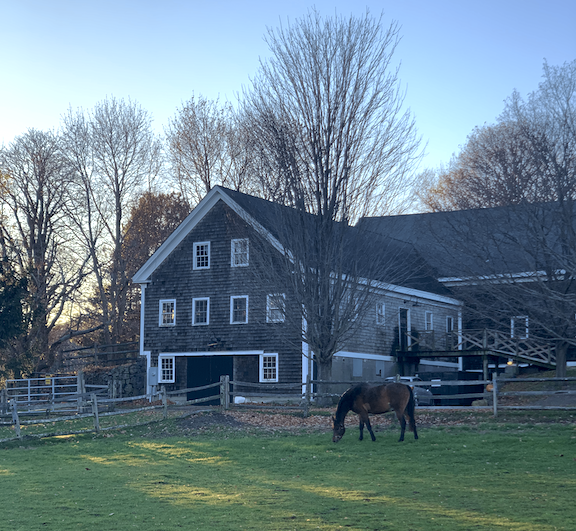
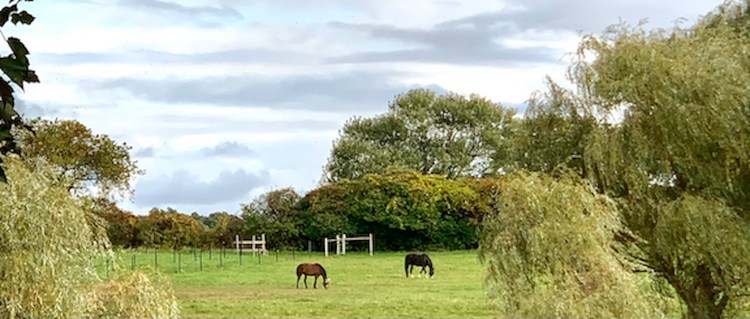
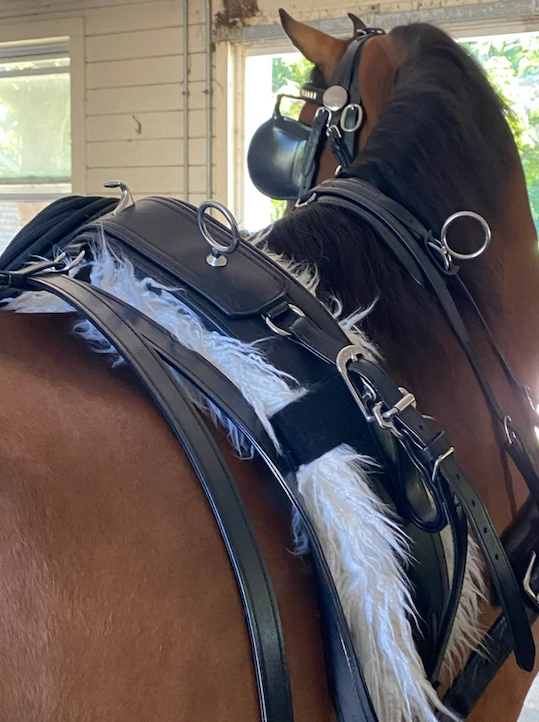
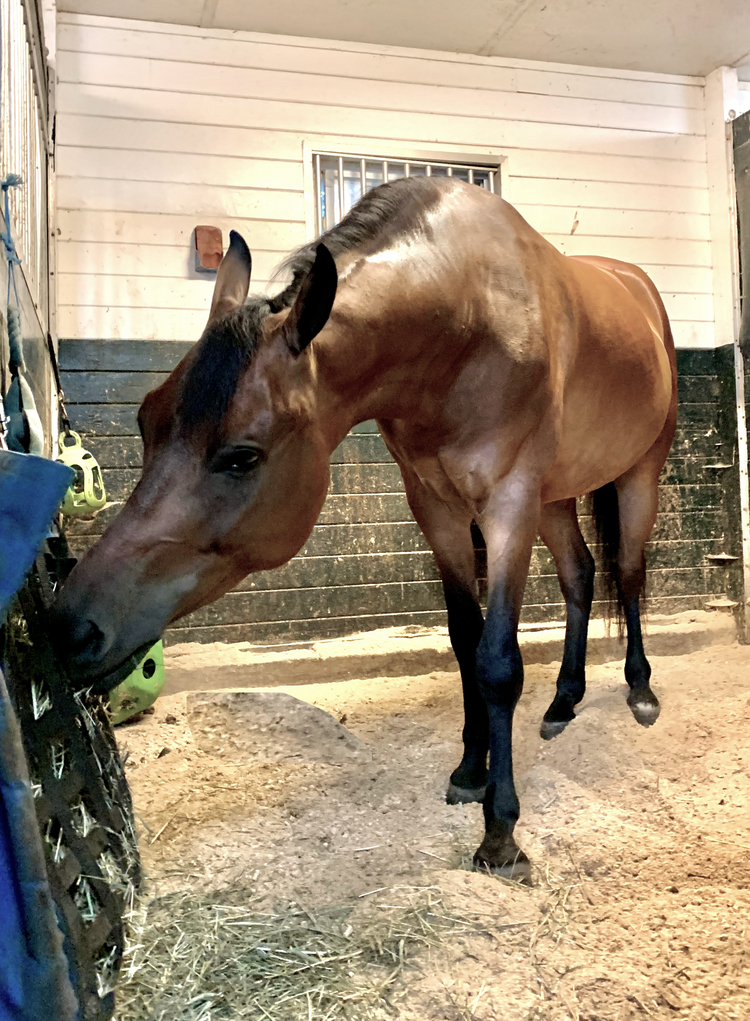
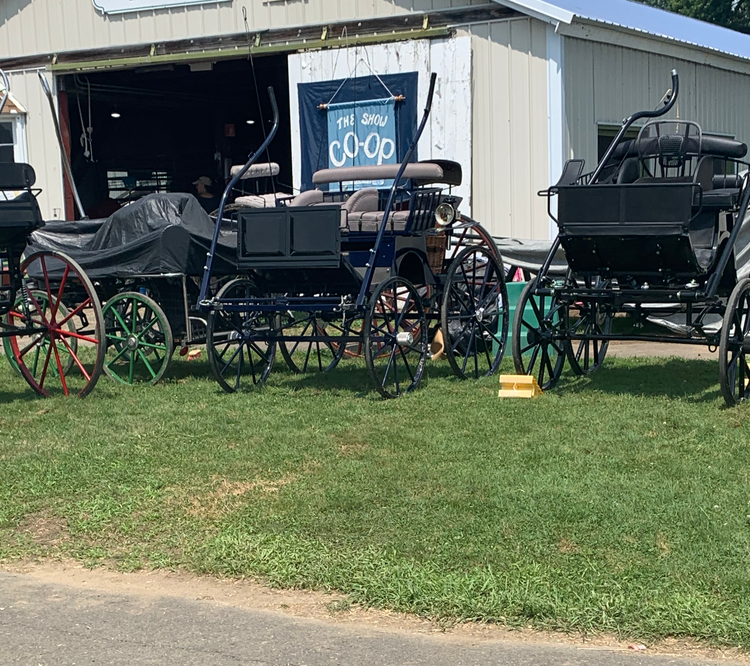
Member discussion